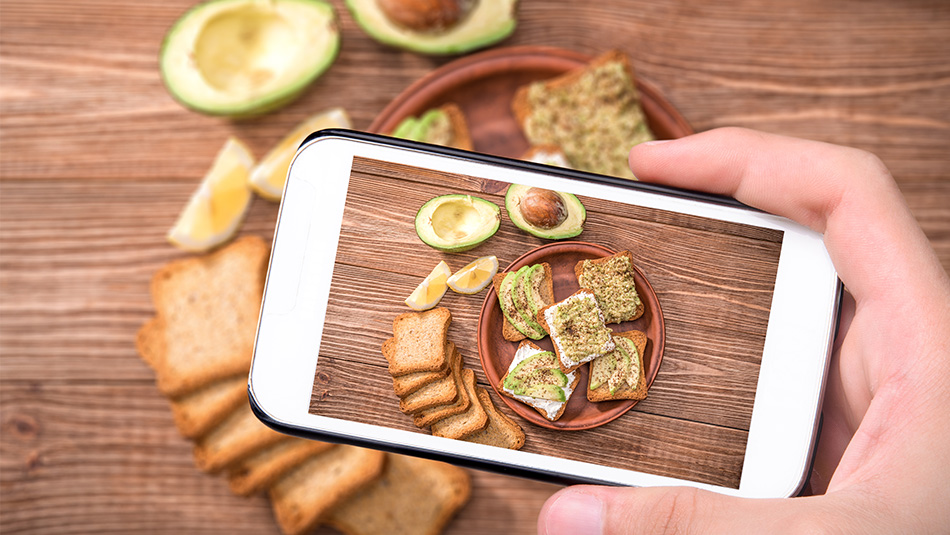Choosing The Best Social Media Tool For Your Food Brand
When done right, your brand’s overall KPI’s can be supported through your social media strategy. However, simply having an online presence and posting to social media is not enough to unlock the full potential of this digital marketing medium.
For starters, a highly-engaged fanbase can now be linked to growing sales volumes, a strong click-through-rate means more buying leads, and a positive review is the most powerful form of word-of-mouth in the digital age. It takes intention, strategy, planning, and patience to do social media marketing right, so by investing in a monitoring tool, you’re empowering your social media manager to operate efficiently in real-time and ensure nothing falls through the cracks.
A quick Google search will show you the hundreds of social media monitoring services begging for your subscription, but when the time comes to commit to one, you’ll want to be sure it can support all of your food brand’s needs—even the ones that aren’t on your radar yet. Tighten up your social media learning curve by avoiding these common mistakes.
Mistake #1: Not Prioritizing User Experience
Once your food brand has defined a purpose for your social media approach (customer retention, brand awareness, community engagement, etc.), it’s important to plan out how to execute the strategy as well as how to measure success. One monitoring service may tout dozens of capabilities, but if the tool’s design is too complicated or adds steps to the process, your team simply won’t use it. Your tool should streamline processes in order to implement your strategy and report back on its success with minimal manual effort. If that’s not happening, your dollars would be better spent elsewhere.
For example, if you know your audience is very vocal on Twitter, you’ll need to make sure that the tool you choose finds the messages you need and serves them up in a way that makes it easy to respond. How about reporting? Does the tool you have your eye on deliver reports that are clear and decipherable for all of the parties who will need to read them? Maybe the content calendar is really sleek on one tool, but it doesn’t measure your click-through rate on the recipe links you’ll post. Does it have a mobile app for spontaneous content opportunities or to address customer concerns on-the-go?
If key features of the tool are clunky or altogether missing, you won’t be making the most of your social media team’s resources, and, therefore, your investment. It’s worth taking time at the outset to work through some free trials in order to find the one that’s most intuitive while meeting all of your functional needs.
Mistake #2: Overlooking Social Listening
Conversations about your food brand are already happening online, and social listening tools help you keep a pulse on what’s being said. These features, which aggregate the most commonly used keywords and phrases associated with your brand, help you quickly determine consumer sentiment and spot industry trends. For example, if you’re Starbucks, you’re likely keeping tabs on your @ mentions, but tracking words like “coffee,” “espresso,” and “latte” can expand your team’s understanding of the marketplace and allow them to develop more targeted campaigns.
When used to its full potential, social listening is like a behind-the-scenes peek into the mind of your audience. This information can be used to drive your content strategy, repair negative impressions, and proactively provide customer service. Don’t underestimate the value of being able to understand the temperature surrounding your food brand or industry.
Has kale’s 15 minutes of fame run out? Is almond butter still all the rage? Maybe Asian fusion foods are trending and there’s a recipe application for your product to promote? Posting content that’s highly relevant to your audience gives you the best chance of making a follower stop scrolling. So, if your social listening trends tell you that a lot of people are spreading their avocado on toast these days, tell them why your bread is the best to spread it on. Perhaps you’ve noticed early signs of waning trust in the food system, this information can be used to strengthen confidence by focusing in on your customer care.
All of this is to say that if your monitoring tool doesn’t allow for some form of social listening, keep moving.

Mistake #3: Not Planning for the Future
As you map out your business’s long-term goals, don’t forget to factor your social media strategy into your food brand’s plan. Approaching your social media management with foresight from the beginning can save you from having to switch tools later on as your strategy evolves.
Think about where you hope to see your brand go in the social space. Maybe you’re focused on Facebook and Twitter to start, but want to branch out to Instagram in Q3. Perhaps you have aspirations of launching a blog for chefs next year? You’ll need to measure click through rates from promotions on social. Don’t forget about users—if you expand your social media team, does the tool allow for multiple profiles?
Having to switch tools after you’ve launched can cause major workflow interruptions and mean losing historical data—neither of which are in your business’s best interests. Most tools have levels to their memberships, so even if you don’t need their full range of features when you’re first starting out, make sure that there’s room for your business to grow. Your team (and your wallet) will thank you later.
The moral of the story is, getting social media management right from the beginning is good for the brand image and the business’s bottom line. Rise to the opportunity that social marketing presents, and choose the tool that will best maximize your team’s efforts and validate your investment.






